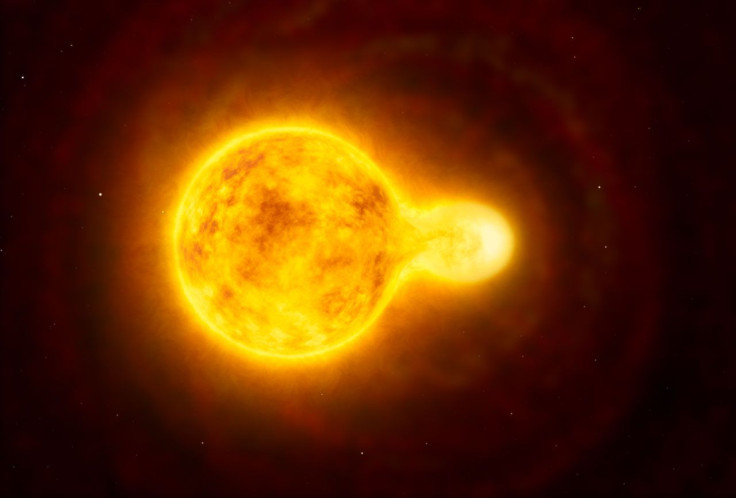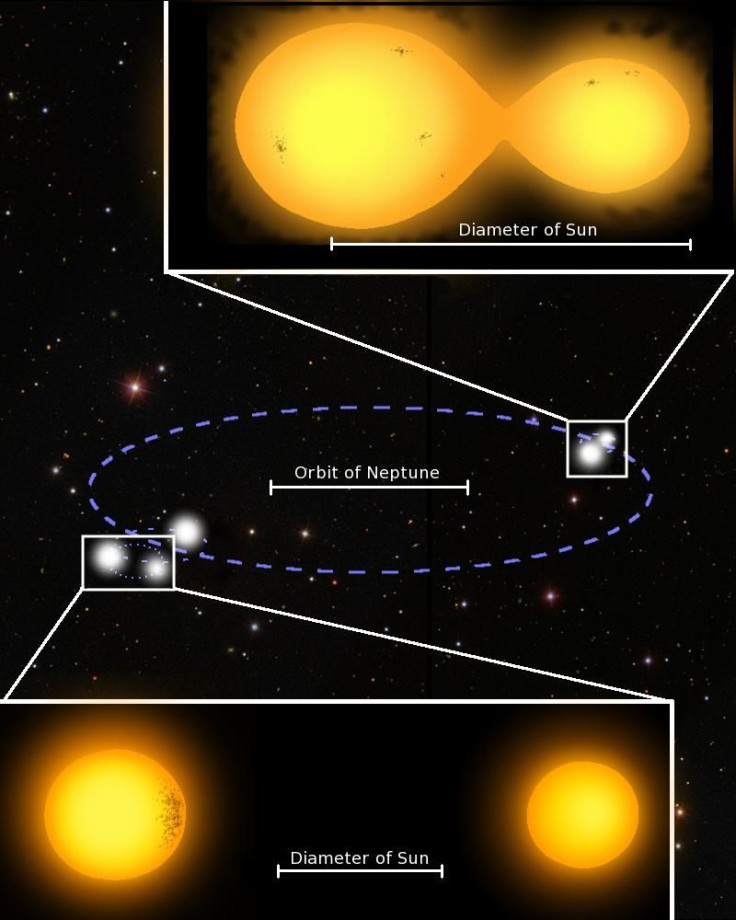A Five-Star System That Would 'Put The Makers Of Star Wars To Shame'

If there are planets in the vicinity of the 1SWASP J093010.78+533859.5 star system, they would probably be perennially bathed in light from five suns. Located just 250 light-years from Earth, this quintuple star system is the first of its kind to be detected by scientists.
In the cosmic scale, binary star systems -- two stars orbiting each other around a common center of gravity -- are a dime a dozen. Star systems with five stars, however, are believed to be extremely rare.
This particular system consists of a “contact eclipsing binary” wherein the two stars are orbiting so close together that they share an outer atmosphere, a detached binary where the component stars are separated by a distance of about 1.8 million miles and a lone star located nearly 1.2 billion miles from the detached binary. The contact binary system has an orbital period of just under six hours while the detached binaries complete an orbit in just over a day.

“This is a truly exotic star system. In principle there’s no reason it couldn’t have planets in orbit around each of the pairs of stars. Any inhabitants would have a sky that would put the makers of Star Wars to shame -- there could sometimes be no fewer than five Suns of different brightnesses lighting up the landscape,” Marcus Lohr, from the U.K.’s Open University, who has been studying the star system since 2013, said in a statement. “Days would have dramatically varying light levels as the different stars were eclipsed. They would though miss out on night for a large part of their ‘year’, only experiencing darkness (and a night sky) when the stars were on the same side of their world.”
The presence of these stars was confirmed by astronomers studying data gathered by the international SuperWASP (Wide Angle Search for Planets) project, which provides an accurate measurement of the brightness of stars over time, allowing scientists to plot light curves, graphs depicting brightness against time.
“By combining the data from the five stars’ light curve and their spectra, the Open University researchers have been able to confirm that they are all gravitationally bound together in a single system,” the authors of the study published in the journal Astronomy and Astrophysics, said, in the statement.
© Copyright IBTimes 2024. All rights reserved.












